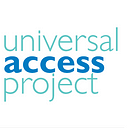An Unseen Crisis: Nearly Half of All Pregnancies Worldwide are Unintended

By Seema Jalan
UNFPA, the United Nations sexual and reproductive health agency, is sounding the alarm on a human rights crisis that has ramifications for women, societies, and the world. Its 2022 State of World Population report, Seeing the Unseen: The case for action in the neglected crisis of unintended pregnancy, estimates that nearly half of all pregnancies worldwide are unintended — totaling 121 million unintended pregnancies each year. The report builds on new data from the Guttmacher Institute and the World Health Organization (WHO) that outlines the first-ever estimates of unintended pregnancy and abortion at the country level, highlighting major disparities across 150 countries in access to quality sexual and reproductive health care.
“This report is a wakeup call. The staggering number of unintended pregnancies represents a global failure to uphold women and girls’ basic human rights,” says Dr. Natalia Kanem, executive director of the United Nations Population Fund (UNFPA). “For the women affected, the most life-altering reproductive choice — whether or not to become pregnant — is no choice at all. By putting the power to make this most fundamental decision squarely in the hands of women and girls, societies can ensure that motherhood is an aspiration and not an inevitability.”
An unintended pregnancy, by definition, is unplanned; but it may be wanted or unwanted, or anywhere on that spectrum. And it can happen to any person of reproductive age who can get pregnant — young or old, partnered or unpartnered. This report, Dr. Kanem emphasizes, “is not about unwanted babies or happy accidents,” but rather about agency: the circumstances that strip it from people, and the ripple effects of that not only for individuals but for the world.
These circumstances, and their outcomes, are complex and layered. Below are some of the key, crosscutting themes emphasized throughout the report.
Gender Inequality Is a Core Driver of Unintended Pregnancies
Myriad factors, rooted in gender inequality, are stripping people of their fundamental decision-making power over their bodies. This includes a lack of quality sexual and reproductive health care and information, including preferred methods of contraception, as well as harmful societal norms or stigma around reproduction and bodily autonomy, intimate partner or sexual violence or coercion, and harmful laws and policies. These factors are compounded for people who are already marginalized due to identifiers such as age, marital status, rural or urban dwelling, gender, sexuality, race, ethnicity, income and education level, or ability.
Unsurprisingly, then, countries with higher rates of gender inequality had higher rates of unintended pregnancy, with just 57% of women able to make their own decisions over their sexual and reproductive health and rights. In a world where nearly 1 in 3 young women are giving birth before the age of 20, can a person imagine a life where pregnancy is a choice, not a given? Do their reproductive intentions even matter?
Conflict Exacerbates Existing Barriers to Sexual and Reproductive Health Care
Natural disaster, war and conflict nearly always put sexual and reproductive health care further out of reach. The war in Ukraine is the latest example: Maternity wards have been shelled and women have been forced to deliver babies in basements, shelters, and subway stations.
“If you had 15 minutes to leave your house, what would you take? Would you grab your passport? Food? Would you remember your contraception?” Dr. Kanem said. “In the days, weeks, and months after a crisis starts, sexual and reproductive health and protection services save lives, shield women and girls from harm and prevent unintended pregnancies. They are as vital as food, water, and shelter.”
This Crisis Reflects Society’s Continued Failure to Prioritize the Rights of Girls and Women
The report posits, “[C]an a society truly claim to value motherhood if it results from abridged agency, coercion, stigma or violence”? Societies that that invest in, prioritize and uphold the sexual and reproductive health and rights of all people, especially girls and women, value gender equality and value the ability of girls and women to direct the course of their own lives.
The true scope of the impacts of unintended pregnancy are wide-ranging and impossible to quantify. What we can attempt to measure, however, is alarming: More than 60 percent of unintended pregnancies end in abortion, and nearly half of those abortions are unsafe, and directly lead to five to 13 percent of all maternal deaths worldwide — what the report calls a public health emergency.
In addition to the direct physical risks of pregnancy, birth, and abortion (particularly unsafe abortion), there are various studies in different countries measuring the impact of unintended pregnancy on education, labor force participation, future earnings, health care system costs, mental health, the health and development of a child resulting from an unintended pregnancy, and more. The toll, UNFPA says, has long been “unseen.”
There is no one “magic bullet” to solve this crisis, although both education and labor force participation are enablers of choice and equality. As multifaceted as the context of unintended pregnancy is, so are the solutions. But at the root, they come down to agency — the power for people to exercise real and informed choice about their own bodies and lives, including deciding if and when to have children. This, the report emphasizes, is “one of the keys to unlocking lasting development for all.”
To achieve this, UNFPA works in more than 150 countries to support access to comprehensive sexual and reproductive health care and services — striving for its vision of a world where every pregnancy is wanted, every childbirth is safe and every young person’s potential is fulfilled. A more equitable and just future depends on how we prioritize the health, empowerment, and autonomy of girls and women today.
Explore the State of World Population 2022 report here: www.unfpa.org/swp2022
Learn more about the Universal Access Project and get involved at www.universalaccessproject.org.
